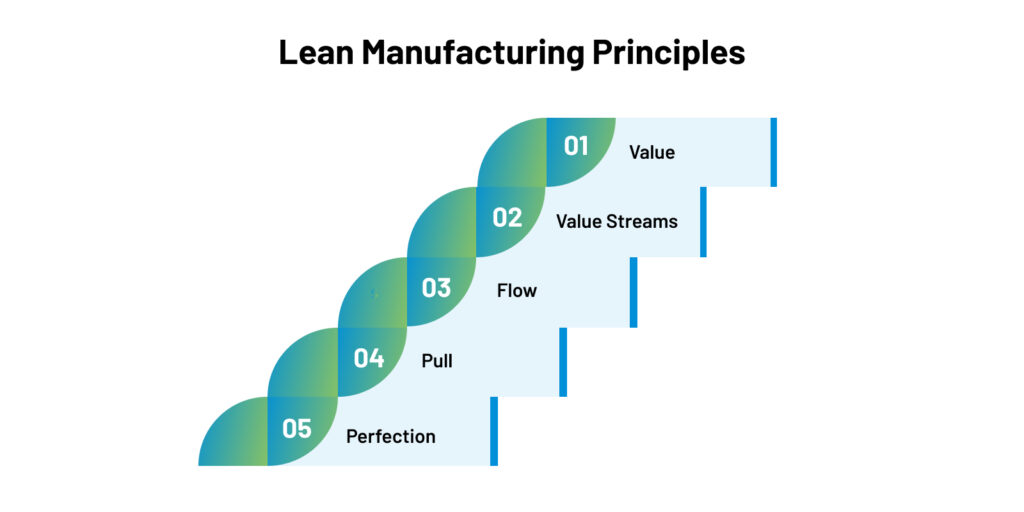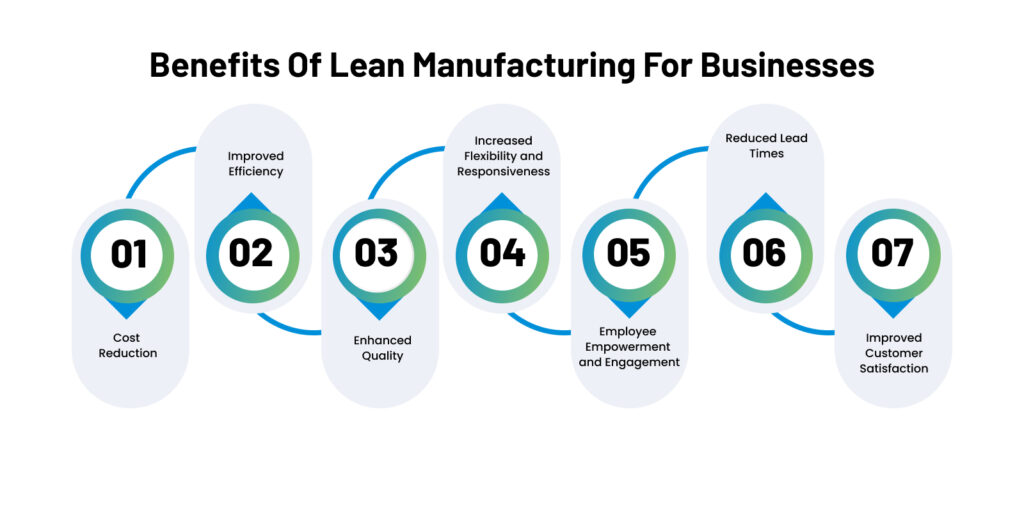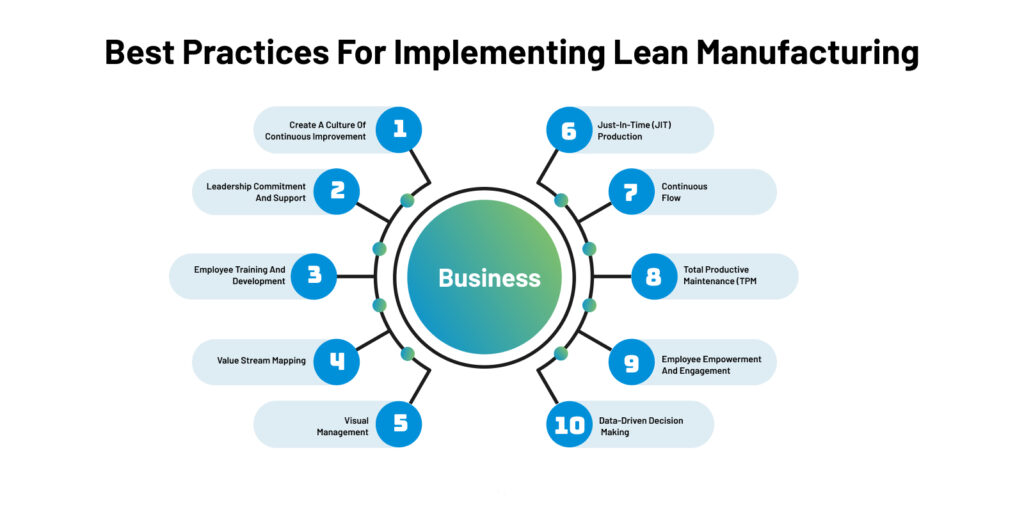In today’s fast-paced and dynamic business environment, organizations across industries constantly seek ways to improve operational efficiency, eliminate waste, and deliver exceptional value to their customers. Lean Manufacturing is one methodology that has gained significant traction and proven highly effective.
Lean Manufacturing aims to streamline processes, reduce costs, enhance productivity, and maximize customer satisfaction. It’s rooted in the philosophy of continuous improvement and focuses on eliminating activities that don’t add value to the final product or service. As a result, organizations optimize operations, drive innovation, and gain a competitive edge in the marketplace. For example, you can partner with industry 4.0 consulting services providers to successfully integrate and implement lean manufacturing.
In this comprehensive blog, we will explore the core principles of Lean Manufacturing and delve into the best practices that organizations can adopt to transform their production processes. In addition, we will uncover how Lean Manufacturing can help businesses reduce costs, improve efficiency, enhance quality, increase flexibility, and foster employee empowerment, paving the way for sustained growth, operational excellence, and customer satisfaction by understanding and implementing these principles and practices.
So, whether you are a business owner, manager, or employee looking to enhance your organization’s performance or an individual interested in understanding the transformative power of Lean Manufacturing, this blog will provide valuable insights, practical tips, and real-life examples to guide you on your Lean journey. So, without any further ado, let’s get started.
Overview of Lean Manufacturing
Lean Manufacturing is a management philosophy and approach that originated from the renowned Toyota Production System (TPS) and has since been adopted by organizations worldwide. It aims to create value for customers by systematically identifying and eliminating waste in all aspects of the production process.
At its core, Lean Manufacturing is guided by continuous improvement, striving for perfection in operations. It emphasizes the need for organizations to constantly evaluate and refine their processes, seeking opportunities to optimize efficiency, quality, and customer satisfaction.
The fundamental goal of Lean Manufacturing is to eliminate activities that do not add value to the final product or service, including overproduction, excessive inventory, waiting time, transportation, unnecessary motion, overprocessing, defects, and underutilizing employee skills.
Organizations can significantly improve productivity, cost reduction, and overall performance by identifying and eliminating these types of waste.
Lean Manufacturing Principles
Lean Manufacturing encompasses a set of principles and practices that provide a roadmap for organizations to transform their operations. These principles include:

Value: At the core of Lean Manufacturing lies the commitment to deliver exceptional value to customers. By understanding their needs, preferences, and aspirations, organizations can tailor their processes to meet those expectations. The customer-centric approach fuels innovation and enables the creation of products and services that resonate with the target audience. Ultimately, the goal is to exceed customer expectations, fostering long-lasting relationships and loyalty.
Value Streams: Lean Manufacturing takes a comprehensive approach to analyze the entire lifecycle of a product or service, from its conception to its ultimate disposal. By mapping the value streams and closely examining each step of the process, organizations gain valuable insights into areas of inefficiency and waste. This enables them to streamline workflows, eliminate non-value-added activities, and allocate resources strategically. The result is a leaner and more efficient operation that optimizes time, materials, and resources, ultimately delivering greater customer value.
Flow: A seamless and uninterrupted flow of materials, information, and processes is a fundamental principle of Lean Manufacturing. Organizations can significantly reduce lead times and increase efficiency by eliminating bottlenecks, optimizing production sequences, and reducing disruptions. This streamlined flow creates a harmonious production environment where resources are utilized effectively, and teams can focus their energy on value-adding tasks. As a result, organizations can respond quickly to customer demands, improve productivity, and achieve operational excellence.
Pull: Traditional manufacturing practices rely on forecasts and push-based production, leading to overproduction and excess inventory. In contrast, Lean Manufacturing advocates for a pull-based system, where production is triggered by actual customer demand. By synchronizing production with demand, organizations can minimize inventory levels, reduce waste, and enhance responsiveness to market changes. This lean approach enables businesses to operate more efficiently, adapt to fluctuating customer needs, and optimize resource utilization.
Perfection: Lean Manufacturing embraces a culture of continuous improvement and the pursuit of perfection. It encourages all employees, from the shop floor to the executive suite, to actively engage in problem-solving, innovation, and learning. By seeking minor incremental improvements in processes, products, and services, organizations can continuously evolve and adapt to a dynamic business landscape. Committing to perfection drives organizations to challenge the status quo, eliminate waste, and consistently deliver higher customer value.
All in all, lean manufacturing is about reducing waste in the form of underutilized workers, unused materials, and shoddy processes. The goal of implementing this method could be to achieve high revenue growth or provide enhanced customer service. And businesses can meet all these expectations by reaping benefits from lean manufacturing.
Moving ahead, let’s explore the top seven benefits of lean manufacturing which businesses can incorporate into their operations to attain higher productivity and seamless business operations:
Benefits of Lean Manufacturing for Businesses
Lean manufacturing offers a multitude of advantages that can significantly impact businesses. Here are some key benefits that businesses can experience through the implementation of lean manufacturing:

1. Cost Reduction: By identifying and eliminating waste throughout the production process, lean manufacturing helps businesses reduce costs associated with excess inventory, overproduction, defects, transportation, and waiting time. Thus, improving financial performance and increasing profitability.
2. Improved Operational Efficiency: Lean principles drive continuous improvement and the elimination of bottlenecks in processes. Businesses can enhance operational efficiency, minimize cycle times, and increase productivity through standardized work, visual management, and just-in-time production for optimized resource utilization and streamlined workflows.
3. Enhanced Product Quality: Quality control is a central focus of lean manufacturing. Businesses can deliver high-quality products that meet or exceed customer expectations by addressing underlying factors contributing to defects and implementing measures to improve product quality, reduce customer complaints, returns, and rework, and fosters an excellent reputation.
4. Increased Flexibility and Responsiveness: Lean manufacturing promotes flexibility and agility in production processes. Practices such as cellular manufacturing and cross-training employees enable businesses to quickly adapt to changing customer demands and market conditions. This agility allows businesses to respond promptly to customer needs, seize opportunities, and stay ahead of competitors.
5. Empowered and Engaged Employees: Lean manufacturing encourages employee involvement, empowerment, and engagement. Through training, problem-solving initiatives, and a culture of continuous improvement, businesses harness the knowledge and creativity of their workforce. Engaged employees contribute to better ideas, innovations, and a positive work environment, increasing productivity and employee satisfaction.
6. Reduced Lead Times: Lean manufacturing minimizes lead times by eliminating waste and improving flow. Implementing pull systems and reducing setup times enables businesses to shorten the time required to transform raw materials into finished products. This helps faster response to customer orders, reduces inventory holding costs, and increases overall efficiency.
7. Improved Customer Satisfaction: Lean manufacturing delivers value to customers by eliminating waste and providing high-quality products. By consistently meeting customer expectations, businesses can enhance customer satisfaction and loyalty. Satisfied customers are more likely to become repeat customers and advocate for the business, contributing to its growth and success.
By embracing lean manufacturing principles and practices, businesses can unlock these benefits, paving the way for improved operational performance, customer satisfaction, and competitiveness in the marketplace.
Now that we understand the benefits of lean manufacturing, moving ahead, let’s delve deeper into the best practices to implement lean manufacturing effectively.
Best Practices for Implementing Lean Manufacturing
Implementing lean manufacturing requires careful planning and adopting best practices to maximize effectiveness. Here are some essential best practices to consider when implementing lean manufacturing:

Create a Culture of Continuous Improvement
- Foster a culture that values continuous improvement at all levels of the organization.
- Encourage employees to identify opportunities for improvement, provide suggestions, and participate in problem-solving initiatives.
- Promote a mindset of learning and innovation to drive ongoing progress.
Leadership Commitment and Support
- Active championing and support for lean initiatives, providing resources, training, and guidance.
- Demonstrate dedication to lean principles, encouraging employee engagement.
- Provide necessary resources, training, and guidance for successful lean implementation.
Employee Training and Development:
- Invest in training programs to equip employees with the knowledge and skills to implement lean manufacturing effectively.
- Offer training on lean principles, problem-solving techniques, process optimization, and other relevant areas.
- Empower employees to take ownership of their work and contribute to continuous improvement.
Value Stream Mapping
- Conduct thorough value stream mapping to visualize material flow, information flow, and processes, identifying waste, bottlenecks, and improvement opportunities.
- Utilize the value stream map as a blueprint for implementing lean strategies.
- Leverage value stream mapping to optimize efficiency, streamline operations, and drive continuous improvement.
Visual Management
- Utilize visual tools like visual displays, kanban boards, and visual cues for real-time information and process transparency.
- Visual management enables performance monitoring, issue identification, and prompt action for teams.
- Promote communication, collaboration, and accountability by implementing visual management techniques.
Just-in-Time (JIT) Production
- Implement JIT principles to minimize inventory levels and optimize production flow.
- Produce items only in response to customer demand to reduce waste and eliminate overproduction.
- Coordinate with suppliers to establish efficient and timely delivery of materials and components.
Continuous Flow
- Strive for a continuous workflow by eliminating or reducing interruptions, waiting times, and unnecessary movement.
- Design workstations and layouts to support a smooth and seamless flow of materials and information.
- Minimise batch processing and optimize the sequence of operations.
Total Productive Maintenance (TPM)
- Implement TPM practices for optimal equipment maintenance and efficiency.
- Conduct regular preventive maintenance and train operators for equipment care.
- Involve employees in equipment improvement initiatives for enhanced performance.
Employee Empowerment and Engagement
- Encourage and empower employees to contribute to lean implementation.
- Involve them in problem-solving, process improvement, and decision-making.
- Create opportunities for cross-functional collaboration and knowledge sharing.
- Recognize and reward employee contributions to sustain motivation and engagement.
Data-Driven Decision-Making
- Collect and analyze relevant data to gain insights into process performance and identify areas for improvement.
- Use key performance indicators (KPIs) to measure progress and make informed decisions.
- Establish a system for monitoring and reviewing performance regularly.
In the End
In conclusion, lean manufacturing represents a transformative approach beyond cost reduction and process optimization. It fosters a culture of continuous improvement and empowers organizations to attain operational excellence. By implementing lean principles and best practices, businesses can eliminate waste, enhance efficiency, and deliver high-quality products that consistently meet customer expectations.
Moreover, lean manufacturing is not a one-time initiative but an endless journey toward perfection. As businesses embrace lean thinking, they cultivate a mindset encouraging innovation, problem-solving, and employee engagement. This comprehensive approach enables organizations to adapt to evolving market demands, drive sustainable growth, and maintain competitiveness in today’s dynamic business landscape.
By embracing lean principles and consistently striving for improvement, organizations can unleash their full potential and achieve a new level of efficiency, effectiveness, and profitability. Additionally, numerous manufacturing technology companies offer technical assistance to both emerging manufacturing firms and established companies, helping them kickstart their digital transformation journey. Manufacturers can seek guidance from these technology companies to initiate their transformation and leverage advanced technologies’ benefits in their operations.




